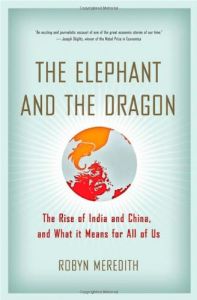Join getAbstract to access the summary!

Join getAbstract to access the summary!
Robyn Meredith
The Elephant and the Dragon
The Rise of India and China, and What It Means for All of Us
W.W. Norton, 2007
What's inside?
Shifting work to Asia means fewer jobs in the West, but higher dividends and cheaper goods.
Recommendation
As China became the world’s manufacturing center, millions of Western factory workers lost their jobs, yet countless Western consumers benefit from cheaper Chinese goods. India handles much of US companies’ back-office work. While this puts Western white-collar employees out of work, it allows Western companies to operate more efficiently, delivering increased value to investors. Robyn Meredith, a foreign correspondent at Forbes and a Hong Kong resident, discusses the positives and negatives of the ascension of China and India. Though this treatise hasn’t benefitted from the passage of time, getAbstract recommends Meredith’s work, with its resemblance to the Silk Road, where every stop is exotic, accessible and interesting.
Summary
About the Author
Robyn Meredith, a Hong Kong resident and former correspondent for The New York Times, is a foreign correspondent for Forbes magazine, covering China and India.

















Comment on this summary
The winners of this revolution - Corporations, politicians, wall street, CEOs on this side of the fence and everyone else on the other side. Who is the loser? The American Worker! The bitter truth is that this phenomena is a result of Corporate greed. Have you wondered how many of your every day items have been cheaper? Phone cases - yes but otherwise look around - Toys cost about the same, cars, groceries, education,cable, movie tickets, gas ... everything costs about the same before / after the 'outsourcing' era.
I bought a hi-end speaker made in USA for 3K about 12 years back. Later sold them and recently bought the same - now they are made in China - guess how much I paid for them? 4K - who kept the profits?